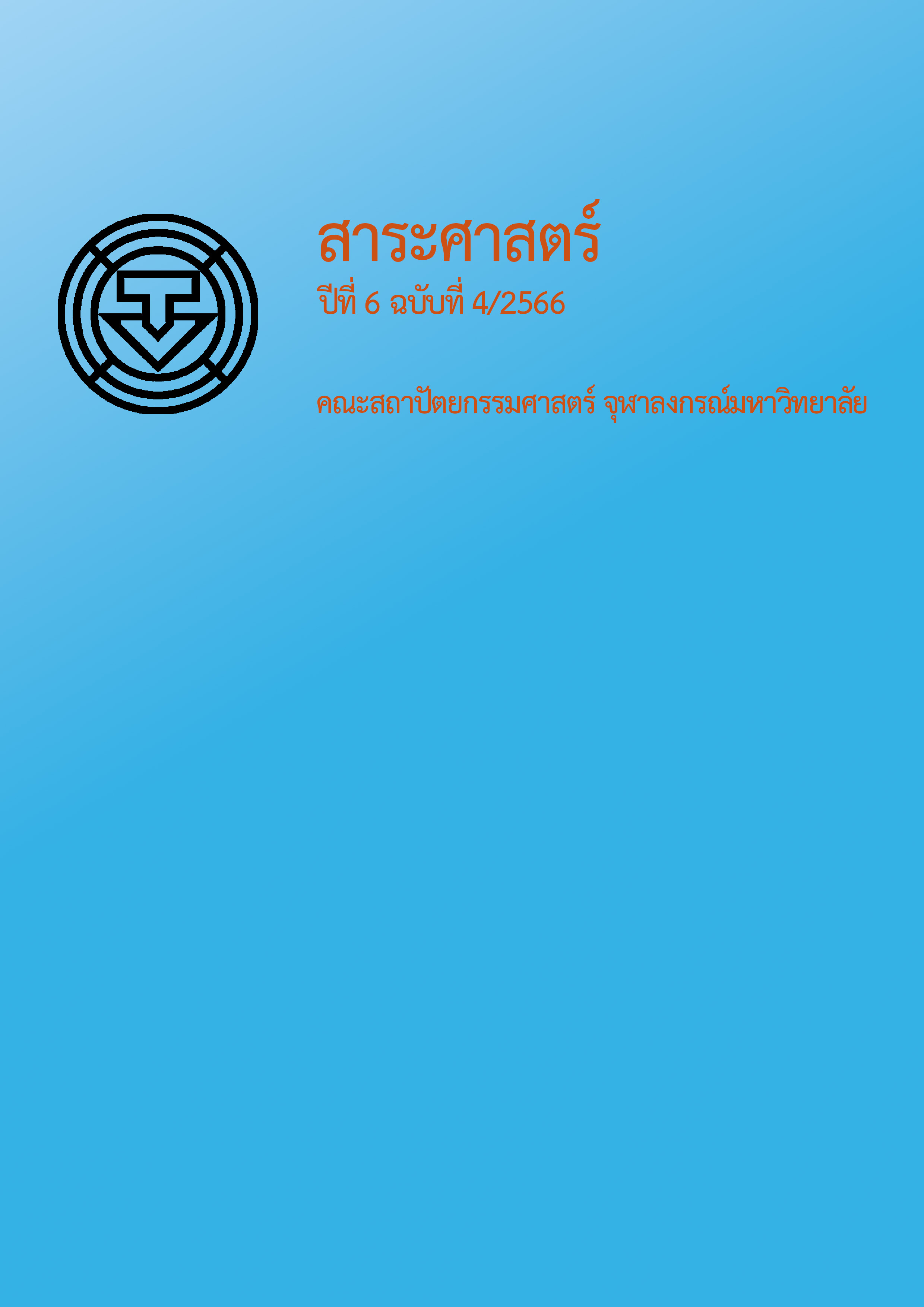Effect of Signage on User Satisfaction: A Case Study of the Outpatient Building of a Tertiary Hospital in Bangkok
Main Article Content
Abstract
Numerous hospitals have expanded their buildings to increase space and capacity to deliver better healthcare services. As a result, the layout of these hospitals has become more complex. Therefore, a significant number of users are disabled by their diseases that affect their capability of finding a way. Some research has demonstrated that it is difficult to find a way into the hospital and that this affects the quality of medical care. Hence, the development of a suitable wayfinding system can greatly assist users in finding their way.
The main purpose of this study is to study the effect of signage on user satisfaction through survey research. The data were collected from observation and measurements of 4 commonly installed signages in the outpatient building of a case study hospital. and collected user satisfaction on signage through a questionnaire from 100 people, then analyzed by using an appropriate statistics test.
The findings demonstrate that variations in color, text style, and size have an impact on user satisfaction for certain types of signage, and that the density of information had a significant impact. Black text on a yellow background and white text on an orange background are appropriate color schemes, as is the background with yellow and orange, which is a warm tone. Get more user satisfaction than the blue background, which is a cool tone. For identity signs, installed at 230–240 centimeters from the ground and having the text size of Thai letters from 8-12 centimeters, using the bold weight of Font Dillenia UPC had the same effect on user satisfaction as the bold weight of Font TH Sarabun New. And the text size of Thai letters is 12 centimeters had the same effect on user satisfaction as 8 centimeters. And found that the proper information density is approximately 5–7 destinations and should not exceed 10 destinations. Therefore, designers should focus their efforts on improving or designing such elements. Since signage is a part of the wayfinding system, it is important information that affects the users' success in finding their way into the building.
Article Details
References
วิมลสิทธิ์ หรยางกูร. (2535). พฤติกรรมมนุษย์กับสภาพแวดล้อม (พิมพ์ครั้งที่ 3). โรงพิมพ์แห่งจุฬาลงกรณ์มหาวิทยาลัย.
เอื้อเอ็นดู ดิศกุล. (2543). ระบบป้ายสัญลักษณ์. พลัสเพลส.
Alison, B., Paul, L., Ole, L, & Sue, W. (2017). Information design: Research and practice. Routledge.
Arthur, P. L., & Passini, R. (1992). Wayfinding: People, signs, and architecture. McGraw-Hill.
Department of Health. (2005). Wayfinding: Effective wayfinding and signing systems guidance for healthcare facilities. TSO.
Gibson, D. (2009). The wayfinding handbook: Information design for public places. Princeton Architectural Press.
Jeffrey, C. (2017). Wayfinding perspectives: Static and digital wayfinding systems – Can a wayfinding symbiosis be achieved? In A. Black, P. Luna, O. Lund, & S. Walker (Eds.), Information design: Research and practice (pp. 509-526). Routledge.
Rechel, B., Buchan, J., McKee, M. (2009). The impact of health facilities on health care workers ‘well-being and performance. International Journal of Nursing Studies, 46(7), 1025-1034.
Rodrigues, R., Coelho, R., & Manuel, J. (2019). Healthcare signage design: A review on recommendations for effective signing systems. Health Environment Research & Design Journal, 12(3), 45-65. doi: 10.1177/1937586718814822.
Zijlstra, E., Hagedoorn, M., Krijnen, W. P., Van der Schans, C. P., & Mobach, M. P. (2016). Route complexity and simulated physical ageing negatively influence wayfinding. Applied Ergonomics, 56, 65-67.


